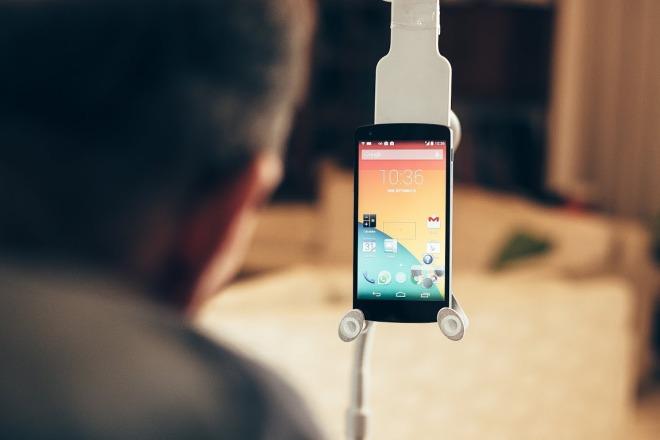A SMARTPHONE HELPING THE DISABLED

Just by saying, “Open Sesame,” the world of communication magically opens up to the mobility-impaired. The Sesame Phone is a genie of a smartphone, using facial recognition to access apps.
Google Nexus 5
The Google Nexus 5 is the home for the Sesame Phone. It has been re-configured with gesture recognition technology to read a person’s head movement. Upon saying “Open Sesame,” a window appears which focuses on key points of the user’s face. Head movement propels the cursor. A slight nod forward makes it possible to click, drag, swipe, or exit. With the combination of voice commands and head gestures, the phone can be operated hands-free.
Being of Google parentage, the Sesame Phone works with the Android mobile operating system. Facial recognition technology replaces the typical use of touch inputs. Among operating systems, Android is the most profitable and commonly used. Research shows that 70% of mobile engineers develop for Android.
The Inspiration
Giora Livne is a former Israeli navy commander and electrical engineer. He has been quadriplegic for nearly a decade. For seven long years, he’d been unable to use a smartphone without assistance. Lacking the independence to text, e-mail, or phone, his communicating ability was limited.
But then came the Israeli television program that changed the course of his life. Fascinated, he excitedly watched a young man demo a computer game controlled by head movement.
Enter the Inventor
Oded Ben Dov was the man demonstrating the computer game. Shortly after his television appearance, the software engineer received a call from Giora. “Could you make a smartphone that I can use?” Giora asked.
It took two years for Giora’s wish to be granted. “Sesame Enable,” the company behind the phone, has been birthed, but is still growing. There are some details yet to be worked out. Giora can use it, but the phone needs to be viable for a variety of disabilities.
Gesture sensitivity is one of the features being addressed. The technology needs to be fine-tuned to detect the swift, distinct movements of those with cerebral palsy, as well as the slow, incremental motion of those with spinal cord injury. The long-term goal is to develop vision-tracking technology for more widespread use among the disabled.
A Smartphone That’s Turning Heads
Research by the Christopher Reeve Foundation reveals that approximately 6 million people in the US live with some form of paralysis. About one-third of them have very limited movement, and 10% are unable to move at all. Among those are people with Parkinson’s, ALS, and multiple sclerosis. Consequently, there’s a large market for this empowering phone.
Oded Ben Dov is also working with other smartphone manufacturers to widen the availability of Sesame. The benefit will be two-fold: expanding options for disabled customers and decreasing the phone’s current price of $900.
However, a major milestone has already been achieved with the creation of a software development kit for other app developers to use with their own products. This will make it possible for face recognition to move into the market of mobile games. When the full Sesame package is complete, users will be able to make phone calls, surf the web, e-mail, and play games, all on their smartphones.
An Invite From Indiegogo
Meanwhile Indiegogo, the crowdfunding entity, is being employed to raise $30,000 to support continued development of Sesame. Investors, developers, and engineers are invited to participate.
Sesame Enable will widen the world for the disabled. Soon, a telephone call will be just a nod away….
